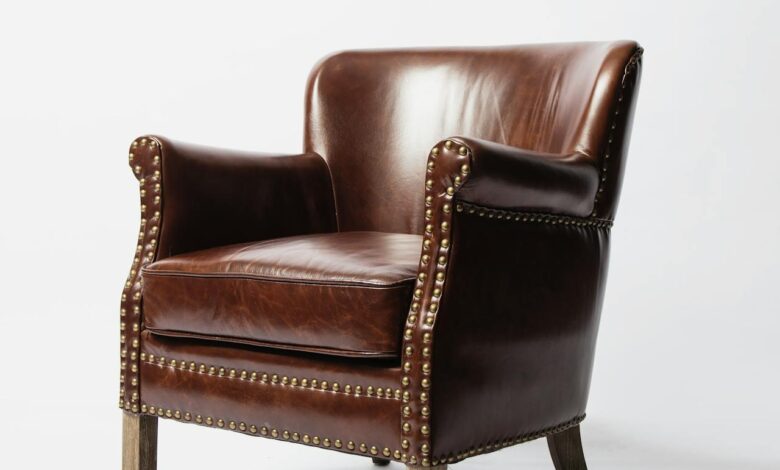Which Staples and Nails Should You Use for Upholstery?

When you’re working on an upholstery project one of the most overlooked decisions is also one of the most important—selecting the right staples or nails for your tool. The wrong fastener can cause poor hold, tool jams, or even visible fabric damage.
Why Fastener Choice Matters
You might have the perfect fabric, the right foam, and a solid frame. But if your staples or nails don’t match your tool or materials, the whole piece can fall apart—literally. Choosing the correct fasteners doesn’t just impact how the furniture looks. It also affects how long it lasts and how easy the job is to complete.
Staple Guns vs Upholstery Nail Guns
There are two main tools used in upholstery fastening.
Staple guns fire U-shaped metal staples and are often used for securing fabric to wooden frames. They’re ideal for holding material tight and flat.
Upholstery nail guns drive thin nails or brads into the frame and are often used for visible finishes or fine detailing. Some nail guns can also fire decorative tacks, giving a polished look.
Each tool requires its own specific type of fastener—and not every staple or nail is compatible across brands or models.
Staple Sizes: Crown Width, Leg Length, and Wire Gauge
Staples come in different shapes and sizes, and choosing the right one is critical. You’ll need to understand:
· Crown width – This is the top part of the staple. Narrow crown staples are ideal for precision work. Wide crown staples provide more surface area for grip.
· Leg length – This determines how deep the staple penetrates. For thick fabrics and foams, longer legs are better. But for delicate materials, a short leg avoids unnecessary holes or damage.
· Wire gauge – This is the thickness of the staple. Upholstery typically uses fine wire (20-22 gauge) for delicate work and medium wire (18 gauge) for general use.
Which Sizes Work Best?
When it comes to choosing staple sizes for different materials, it’s important to match the fastener to the job. For softwood frames paired with thin fabrics, fine wire staples with a short leg and narrow crown usually provide the best hold without damaging the material. If you’re working with hardwood frames or thick padding, medium wire staples with a longer leg and wider crown offer the strength and depth needed to secure everything in place. For tougher surfaces like leather or vinyl, stainless steel staples are the best choice—they help prevent rust and deliver a cleaner, longer-lasting hold.
Nail Sizes and Head Types for Upholstery Nail Guns
If you’re using an upholstery nail gun, your focus shifts from U-shaped staples to straight nails or brads. These fasteners vary in:
· Length – Typically from 15mm to 40mm for upholstery.
· Gauge – Thin nails (18-22 gauge) are common for clean finishes.
· Head type – Some nails have visible heads, useful for decorative trim. Others are headless or have minimal heads for invisible fastening.
If your upholstery work involves visible wood trim, curved shapes, or design detail, an upholstery nail gun offers a neat finish where staples may look too industrial.
Match the Fastener to the Material
To get the best results, match the staple or nail to the material you’re working with. Here are some common combinations:
· Thick upholstery foam + fabric + softwood frame: Medium crown staples, 10-12mm leg length.
· Leather over hardwood frame: Heavy-duty stainless steel staples or 20mm brads.
· Trim work with visible finish: Upholstery tacks or brads with decorative heads.
Nails offer more flexibility for visual appeal, while staples are better for hidden, strong bonds.
Know Your Staple and Nail Codes
Many staple guns and upholstery nail guns use specific staple or nail codes. It’s not always as simple as grabbing a pack marked “universal.”
Here are some popular examples:
· T50 staples – Used in many heavy-duty manual and electric staple guns.
· 71 Series staples – Common in pneumatic upholstery staplers.
· 80 Series staples – Shorter than 71, ideal for fine fabric.
Always check your tool’s manual or look inside the magazine for stamped codes. Using the wrong size can lead to jamming, misfires, or even tool damage.
What Happens If You Use the Wrong Staples or Nails?
This isn’t just about a perfect finish. The wrong fastener can:
· Tear or pucker fabric
· Fail to hold foam or webbing in place
· Jam your staple gun or nail gun
· Damage internal upholstery components
· Cause injury if the fastener misfires or bends
Fasteners may seem like a small part of your project, but they do the heavy lifting.
Final Thoughts
When you’re deep into a project, it’s tempting to treat staples and nails as an afterthought. But if you want your work to be durable and look polished, they deserve attention. With the right staples or nails, your staple gun or upholstery nail gun becomes a tool you can rely on—not just for today’s project, but for years of use.
Choosing the correct fastener might take a few extra minutes, but it saves time, money, and frustration later on. So next time you’re setting up, don’t just think about fabric or foam—think about what’s holding it all together.




